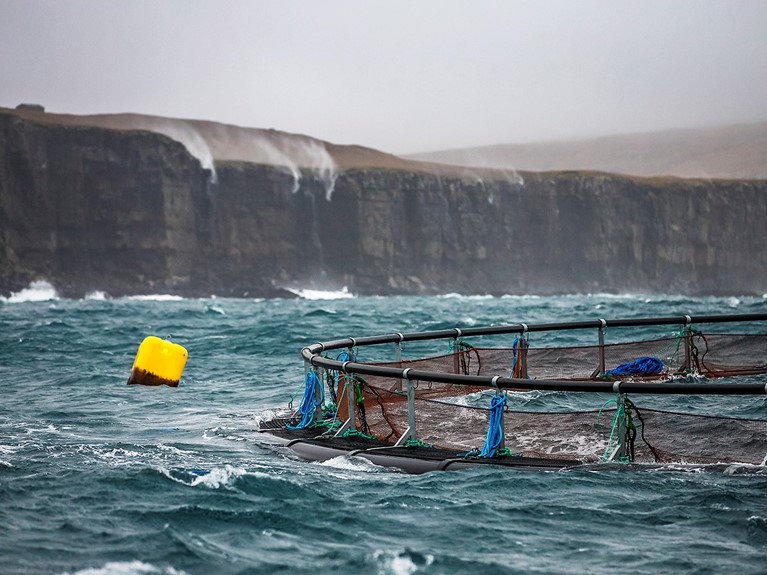Ása Johannesen, PhD and researcher at Fiskaaling, has published this article in PLOS One open access publication. The article presents results from the Salmon and the Surf research project.
Due to increasing demand for salmon and environmental barriers preventing expansion in established sites, salmon farmers seek to move or expand their production to more exposed sites. In this study we investigate the effects of strong currents and waves on the behaviour of salmon and how they choose to use the space available to them.
Observations are carried out in a site with strong tidal currents and well mixed water. Using video cameras and echo sounders, we show that salmon prefer to use the entire water column, narrowing their range only as a response to cage deformation, waves, or daylight.
Conversely, salmon show strong horizontal preference, mostly occupying the portions of the cage exposed to currents. Additionally, waves cause salmon to disperse from the exposed side of the cage to the more sheltered side. Even when strong currents decrease the amount of available space, salmon choose to occupy the more exposed part of the cage.
This indicates that at least with good water exchange, the high density caused by limited vertical space is not so aversive that salmon choose to move to less desirable areas of the cage. However, the dispersal throughout the entire available water column indicates that ensuring enough vertical space, even in strong currents, would be beneficial to salmon welfare.
The Salmon and the Surf project is a cooperation between Fiskaaling, sfi EXPOSED and Hiddenfjord.
The co-authors are Øystein Patursson, Jóhannus Kristmundsson, Signar Pætursonur Dam, Mats Mulelid and Pascal Klebert.


